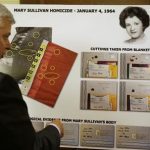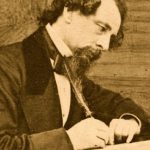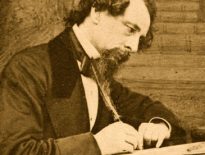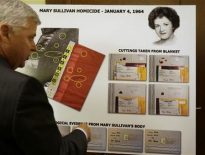BELFAST, Northern Ireland (AP) — Shouting “No surrender!” and singing anti-Catholic songs, Protestant hardliners across Northern Ireland burned midnight bonfires topped with Irish flags and prepared to parade past Catholic areas Friday in an annual test for the British territory’s peace process.
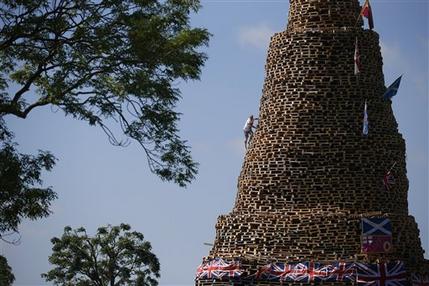
Northern Ireland leaders appealed for calm and police braced for trouble on “the Twelfth,” an annual sectarian holiday that always inflames tensions with the Catholic minority. At least two Protestants were arrested during bottle-throwing skirmishes with police near the scene of several Belfast bonfires early Friday.
The police commander, Chief Constable Matt Baggott, took the unusual step of importing 630 police officers from England and Scotland to beef up his own 7,000-member force. The officers have already received Northern Ireland-specific riot training as part of their deployment last month to provide security for the Group of Eight summit of world leaders.
Baggott said the reinforcements would help deter trouble when the major British Protestant brotherhood, the Orange Order, mounts 550 parades in commemoration of a 17th century military victory over Irish Catholics. He said 43 parades would pass near potentially hostile Catholic areas.
“Violence is not inevitable,” said his deputy overseeing the police operation in Belfast, Assistant Chief Constable Will Kerr.
For more than two centuries, Orangemen have marched to commemorate July 12, 1690, when forces loyal to William of Orange, the newly crowned Protestant king of England, routed the army of the deposed Catholic king, James II, in a river valley south of Belfast.
Orangemen march beneath banners portraying the British crown atop an open Bible and proclaim William as defender of their civil and religious liberty on what was then, and now, a mostly Catholic island.
Most Catholics loathe the marches as a Protestant effort to intimidate and insult them, a view underscored by the Orangemen’s accompaniment on parade by so-called “kick the pope” bands of fife and drum playing a mixture of Gospel and sectarian tunes. The bonfires similarly attract Catholic scorn because they are adorned with Irish and papal flags and anti-Catholic messages.
Protestant youths placed a stolen Virgin Mary statue on one bonfire in west Belfast. But older residents spotted the statue and returned it Thursday to the Holy Cross Catholic Church in the north Belfast district of Ardoyne, where the parish priest thanked them for what he called their “incredibly responsible act.”
The Rev. Gary Donegan said the statue’s rescue “proves there are leaders within our communities who remain committed to taking positive steps for peace.”
But police prepared for march-related trouble at several Belfast spots near Catholic areas, particularly Ardoyne, a power base for the outlawed Irish Republican Army. Ardoyne was been wracked by violence following the Twelfth parades every year since 2009.
A British government-appointed panel called the Parades Commission since 1997 has imposed restrictions on the path of Orange parades to minimize contact with Catholic communities, but the effort faces no-win situations in the tight sectarian geography of Belfast, with its patchwork of rival districts. Most trouble occurs in the evening as Orangemen march back to their lodges on major Belfast roads.
The Ardoyne clashes typically have persisted for two or three nights and involved the burning of hijacked vehicles, the hurling of homemade grenades and bursts of gunfire from IRA members. More than 250 police officers have been injured there in Twelfth-inspired violence since 2009.
The recurring conflict demonstrates how IRA splinter groups remain active despite the 2005 decision of most IRA members to disarm and officially abandon their 1970-1997 campaign to force Northern Ireland out of the United Kingdom.
This year for the first time, the Parades Commission has ordered Orangemen to avoid the main road beside Ardoyne. But the Orangemen have no logical alternative route to their lodge in a nearby district, and Protestants are threatening to stand their ground until police let them through.
Orange leaders dismissed concerns that their plan for late-night standoffs with police could easily spiral out of control.
“The Parades Commission has created this crisis,” said the Orange Order’s chaplain, Mervyn Gibson.


